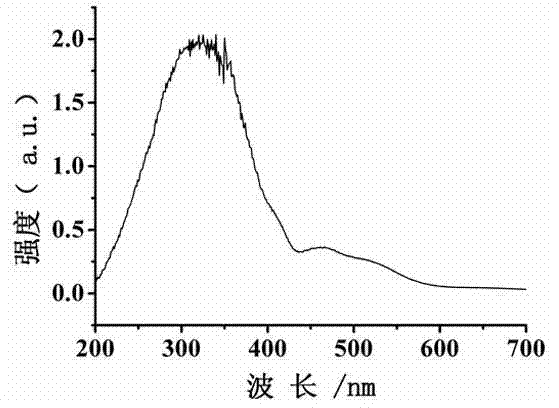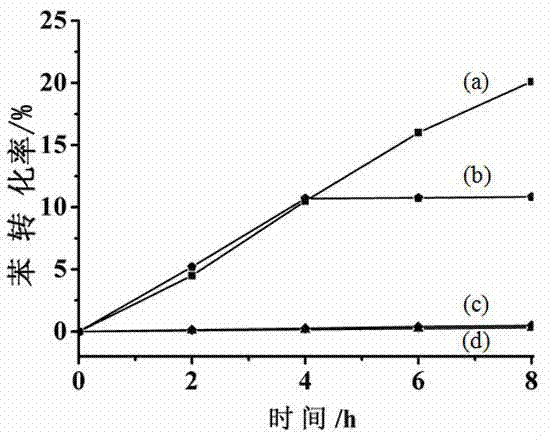Application of MIL-100 (Fe) in preparation of phenol through photocatalytic hydroxylation of benzene
A phenol and visible light technology, applied in the field of photocatalysis, can solve problems such as aggravating environmental pollution and huge energy consumption, and achieve the effects of saving energy consumption, simple and easy experimental operation methods, and being conducive to large-scale promotion.
- Summary
- Abstract
- Description
- Claims
- Application Information
AI Technical Summary
Problems solved by technology
Method used
Image
Examples
Embodiment 1
[0017] Preparation of MIL-100(Fe) Photocatalyst
[0018] Fe(NO 3 ) 3 9H 2 O, H 3 Add 5mL H to BTC 2 O, stirred for 10-15min to obtain a suspended mixed solution, which was transferred to a 100mL hydrothermal kettle, and reacted at 160-180°C for 12h. The solid was obtained by filtration, washed and dried. figure 1 The X-ray diffraction (XRD) pattern of the visible light catalyst MIL-100(Fe) of the present invention is shown, and it can be found from the figure that the prepared MIL-100(Fe) is a pure phase. figure 2 The ultraviolet-visible diffuse reflectance diagram of the visible light catalyst MIL-100(Fe) of the present invention is shown. It can be seen from the figure that the absorption band edge of MIL-100(Fe) extends to 600nm, which can effectively absorb visible light.
Embodiment 2
[0020] Hydroxylation of Benzene to Phenol Using MIL-100(Fe) Photocatalyst
[0021] The prepared Fe-based metal-organic framework material MIL-100(Fe) was used as a photocatalyst to hydroxylate benzene. Weighed 10 mg of the catalyst and added 2 mL of acetonitrile, 2 mL of water, and 44 μL of benzene, and then added 42 μL of H 2 o 2 (30wt%). Then the light source was turned on for photocatalytic reaction, and the product was detected by gas chromatography. The light source used in the experiment is a 300 W xenon lamp, and a filter is used to ensure that the incident light is visible light (420 nm image 3 As shown, it can be seen from the figure that when there is a catalyst, the conversion rate of benzene reaches 20.1% after 8 hours of light irradiation (curve a), and the conversion rate of benzene remains basically unchanged after filtering the catalyst after 4 hours of photocatalytic reaction (curve b). , while under the condition of no catalyst or no light, the conversion ...
PUM
 Login to View More
Login to View More Abstract
Description
Claims
Application Information
 Login to View More
Login to View More - R&D
- Intellectual Property
- Life Sciences
- Materials
- Tech Scout
- Unparalleled Data Quality
- Higher Quality Content
- 60% Fewer Hallucinations
Browse by: Latest US Patents, China's latest patents, Technical Efficacy Thesaurus, Application Domain, Technology Topic, Popular Technical Reports.
© 2025 PatSnap. All rights reserved.Legal|Privacy policy|Modern Slavery Act Transparency Statement|Sitemap|About US| Contact US: help@patsnap.com



